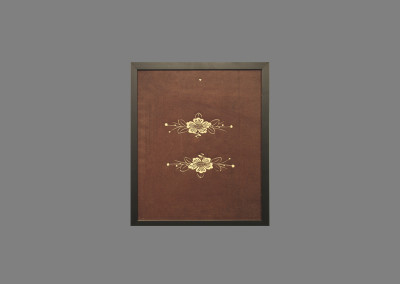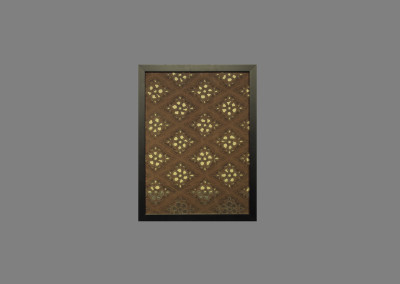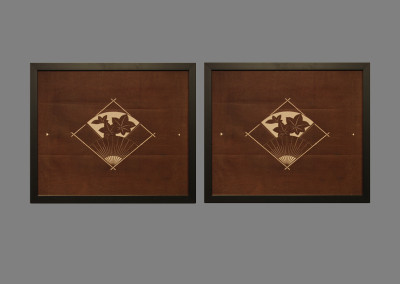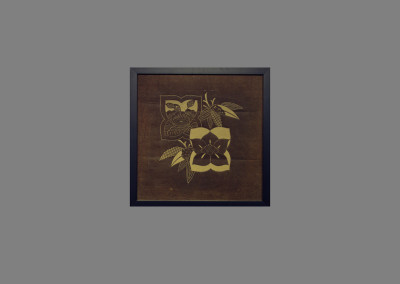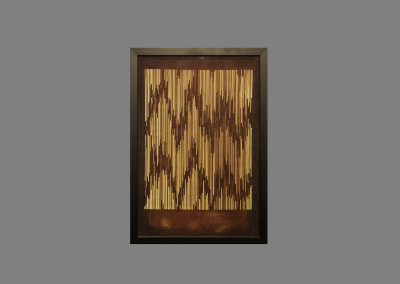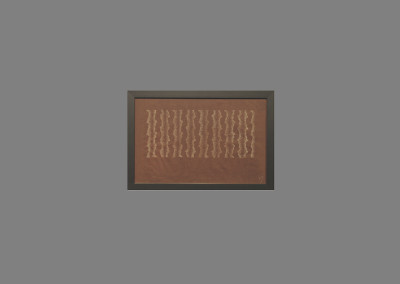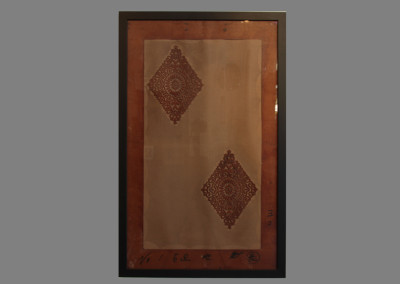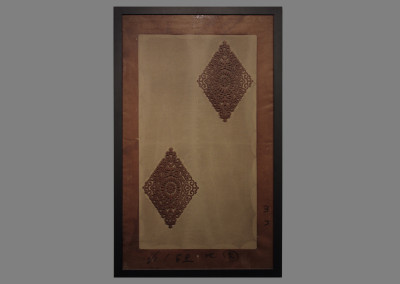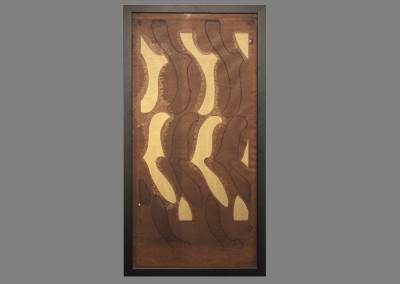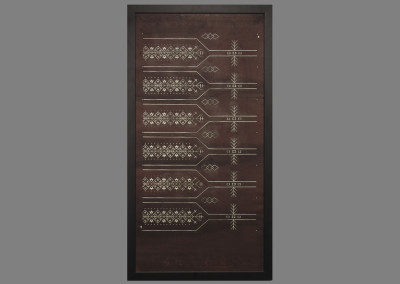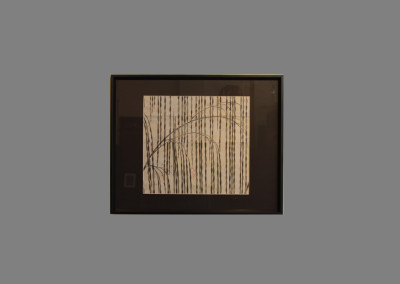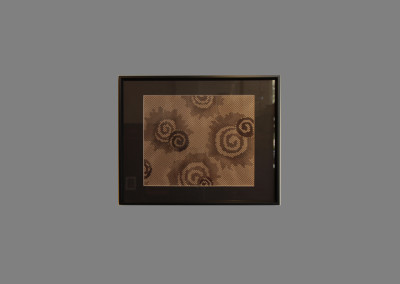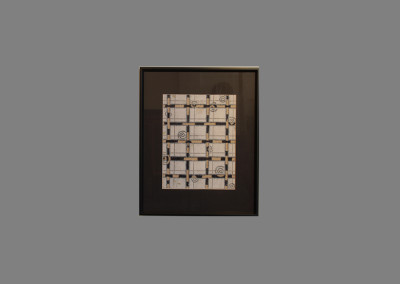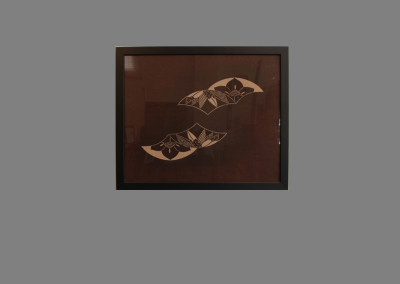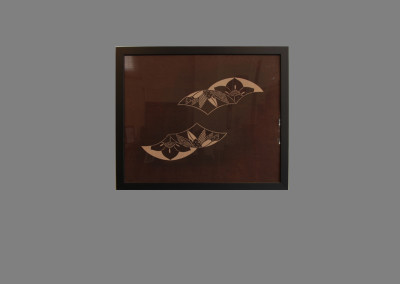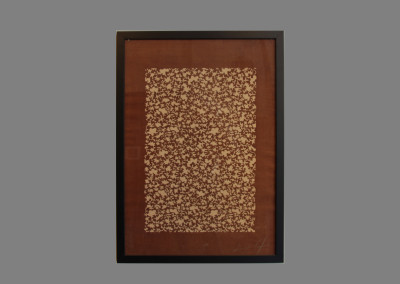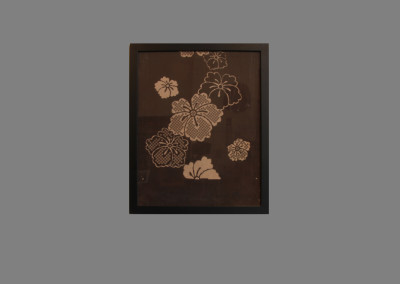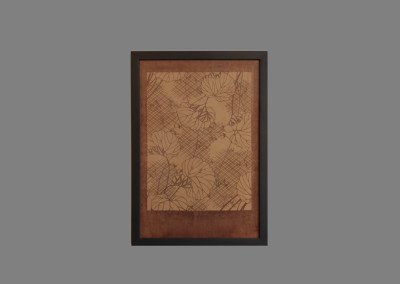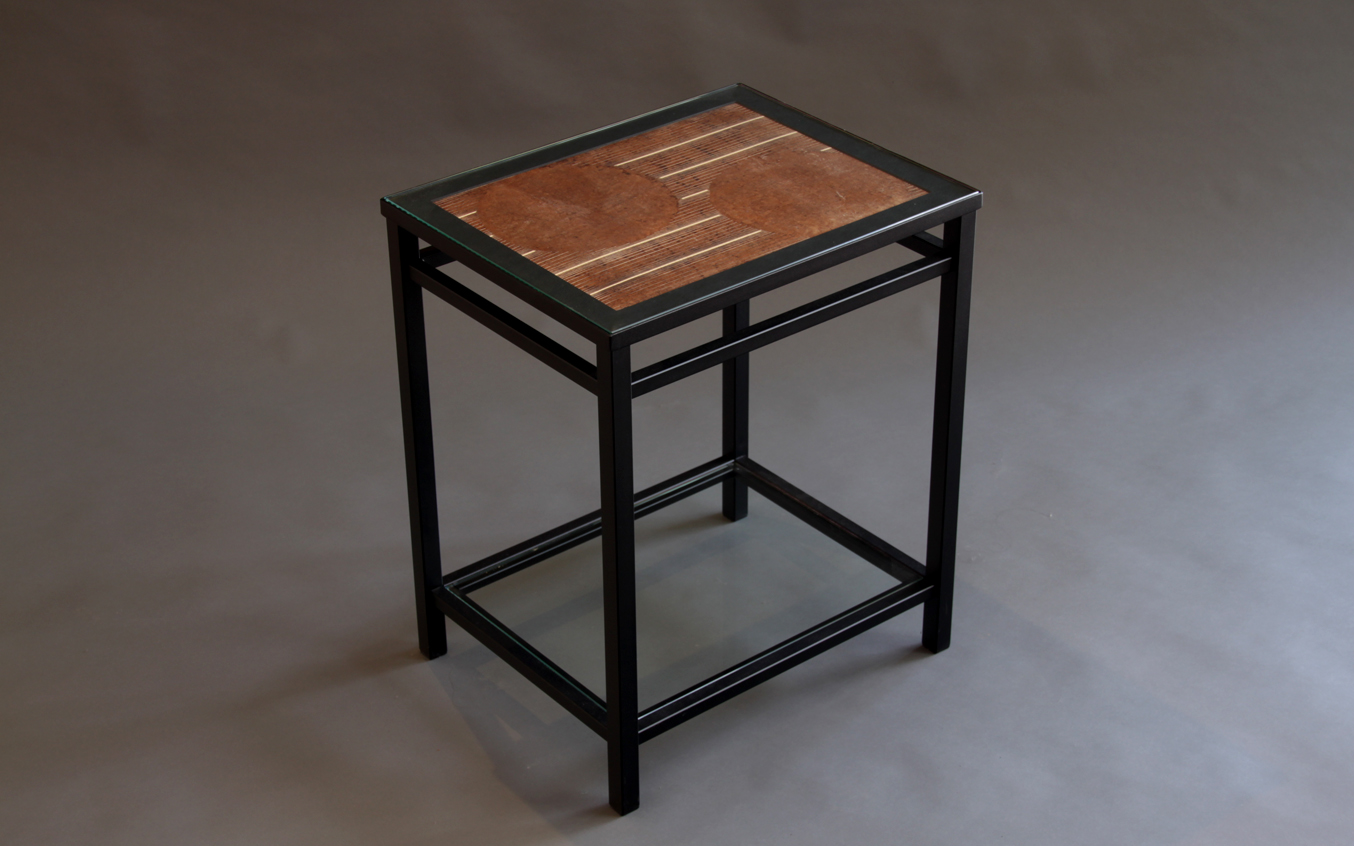Table Asia Gallery
KatagamiKatagami has been an important part of Japan’s material culture for almost 500 years. Katagami stencils were used to pattern textiles in a technique called katazome. This delicate dye-resist technique traditionally involves applying rice paste through a stencil onto silk, followed by an exacting procedure of multiple stencil realignments and paste applications in order to continue the yardage’s pattern. The material is then dyed, sometimes repeatedly to develop the final result. The paste is then removed to reveal exquisite voided patterns.
The stencil’s highly detailed cutouts result in large areas of negative space. The precise cutouts are supported by an equally fine, though less visible, silk thread grid that stabilizes each of the tiny paper components.
The stencil-making process involves first curing numerous thin sheets of mulberry bark in persimmon tannin. After arranging a small stack of cured papers and drawing the pattern on the surface sheet, all layers are cut with a sharp, curved blade.
Next, the silk support grid is imbedded in between layers and the excess threads are trimmed. The end result is a stencil of unparalleled sharpness supported by a fine silk grid that does not impede the application of rice paste.
Katagami stencils produced in Japan before the third quarter of the nineteenth century frequently used human hair support grids instead of silk. Silk was discovered to not only be less invasive in the dye application and easier to manage, but it was less likely to warp during frequent use. In the 1870s, by resting paper cut-outs on a silk grid stretched around a wooden frame, the French used Japanese techniques to devise an early version of what is known today as the silk screen.
The majority of stencils surviving today are from the late Edo and Meiji periods, about 1789 to 1912, the golden era of stencil production.
Ironically, it is primarily the work of the stencil carver rather than the dyer which has survived to give us a record of popular textiles.

